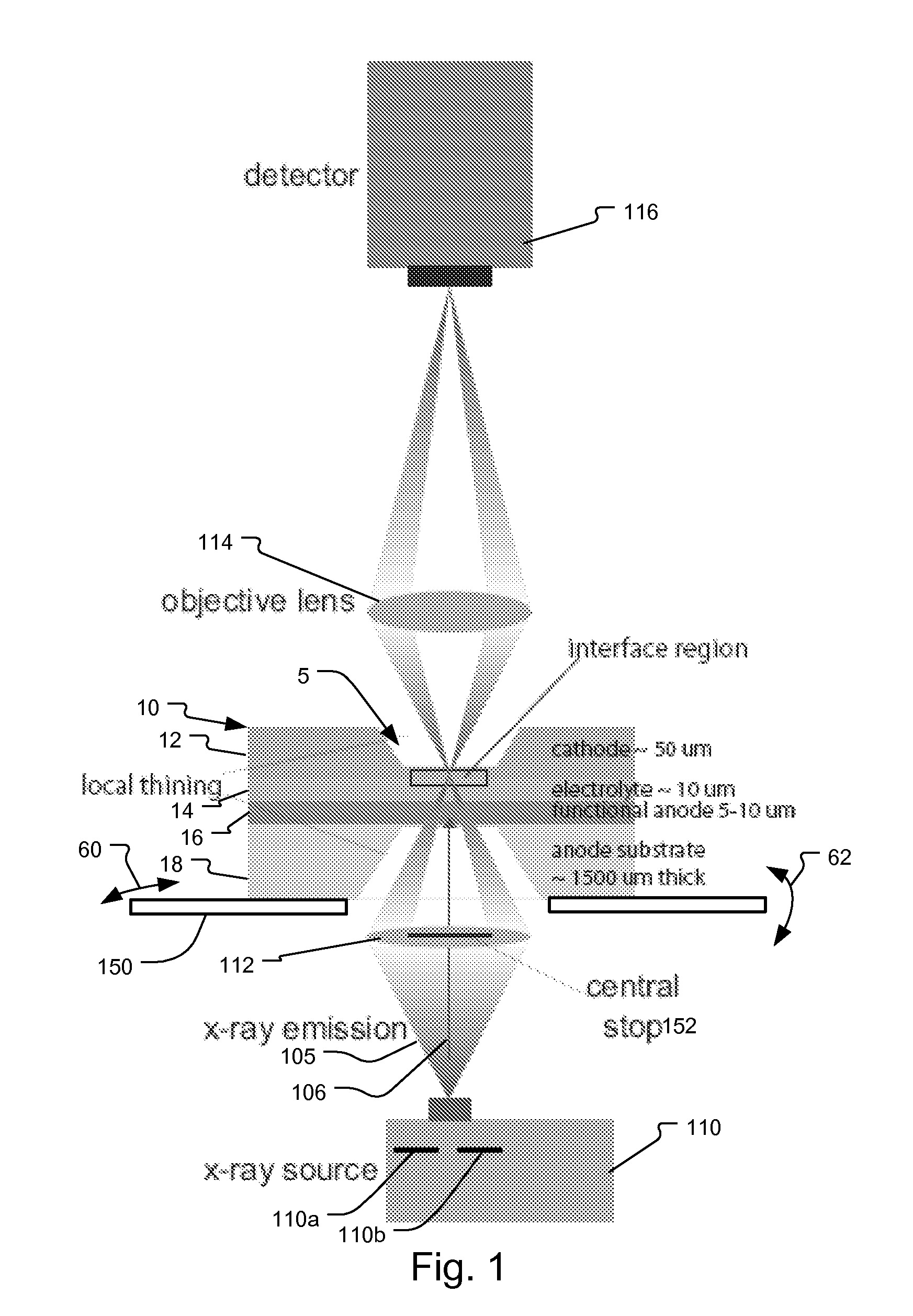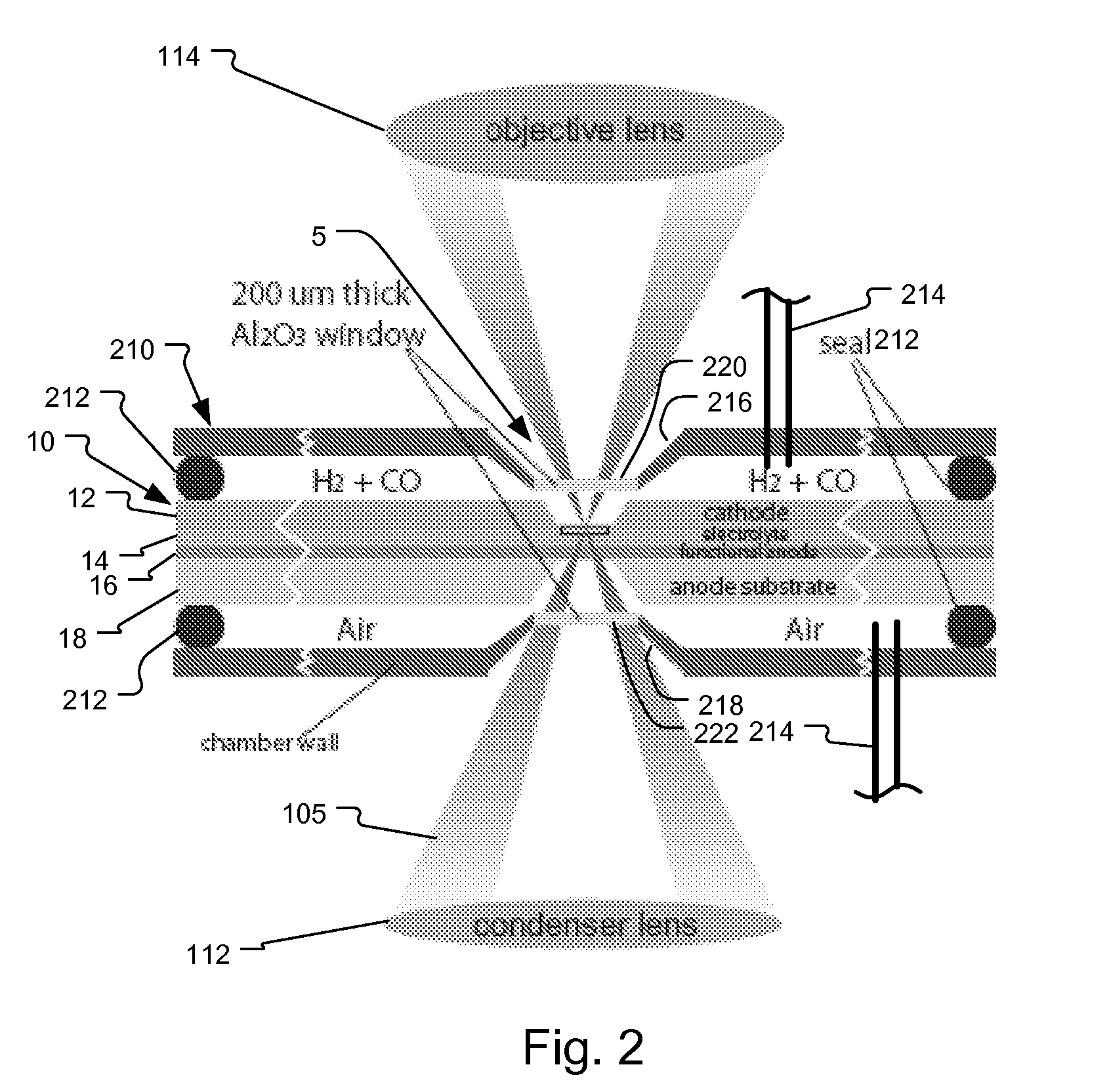System and method for fuel cell material x-ray analysis
a fuel cell and x-ray technology, applied in the direction of material analysis using wave/particle radiation, instruments, nuclear engineering, etc., can solve the problems of tedious and difficult process, general destructive device image processing, etc., to accelerate the development of sofc technology, improve reliability, and reduce development time
- Summary
- Abstract
- Description
- Claims
- Application Information
AI Technical Summary
Benefits of technology
Problems solved by technology
Method used
Image
Examples
Embodiment Construction
[0013]The disclosed tool is designed to nondestructively image the three-dimensional structure of the interface area of LSM / YSZ at 1-100 nm resolution while being able to distinguish four different materials: LSM, YSZ, sulfur, and air (empty gap space). There are two important elements to this approach: (1) how to resolve the structures in 3D and (2) how to distinguish different materials.
[0014]FIG. 1 shows an x-ray microscope (TXM) 100. In a setup similar to a conventional visible light microscope, x-ray microscope 100 comprises an x-ray source 110, condenser lens 112, objective lens 114, and an area detector system 116. This microscope 100 is used to image a SOFC anode substrate 10. In one example, the anode substrate 10 comprises a cathode layer 12 (thickness approximately 50 micrometers (μm)), an electrolyte layer 14 (thickness approximately 10 μm), functional anode layer 16 (thickness approximately 5-10 μm), and anode substrate 18 (thickness approximately 1500 μm).
[0015]Prefera...
PUM
 Login to View More
Login to View More Abstract
Description
Claims
Application Information
 Login to View More
Login to View More - R&D
- Intellectual Property
- Life Sciences
- Materials
- Tech Scout
- Unparalleled Data Quality
- Higher Quality Content
- 60% Fewer Hallucinations
Browse by: Latest US Patents, China's latest patents, Technical Efficacy Thesaurus, Application Domain, Technology Topic, Popular Technical Reports.
© 2025 PatSnap. All rights reserved.Legal|Privacy policy|Modern Slavery Act Transparency Statement|Sitemap|About US| Contact US: help@patsnap.com



